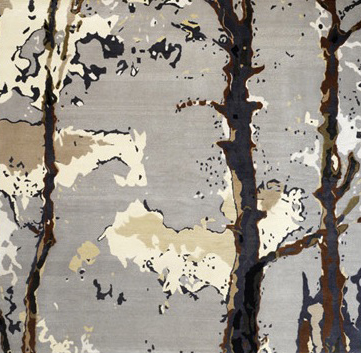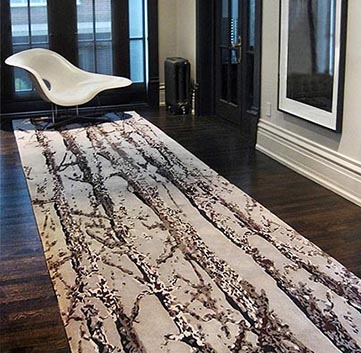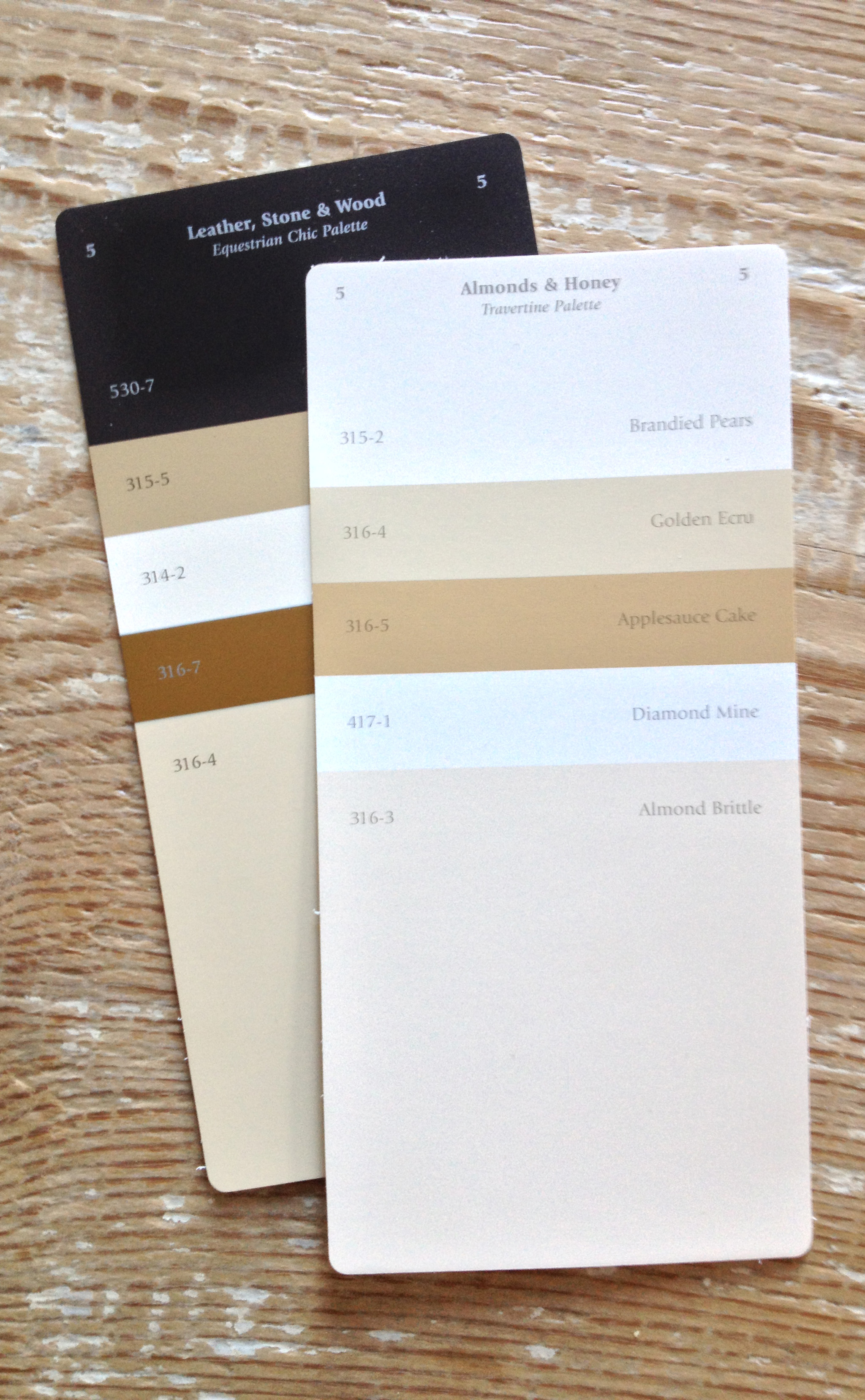This article originally appeared on The Ruggist on 30 January 2013 C.E. under the title ‘OMG! Is he still talking about Copyright?’ On 23 June 2018 C.E. it was re-edited and updated to correct minor name and content changes as well as to provide better quality images.
A valued reader and nouveau friend recently brought to my attention that my last article on copyright had a certain ‘Groundhog’s Day’- esque nature to it. For those of you not in the know, ‘Groundhog’s Day’ is a wonderful (and nostalgic for me: I’ve been to Punxsutawney!!) movie staring Bill Murray that explores the meaning of life through the ad nauseum repeated reliving of one day. In the end Bill Murray’s character comes to some dramatic life altering realizations, but not of course before having some fun; it is a comedy after all. But I digress. When I first read his email I thought ‘Who the hell is he calling repetitive?’ but before I could type a response in so many words, my brain had already begun to contemplate what he was saying. I quickly came to realize the point my astute reader was attempting to make is that ‘Copyright This!‘ and ‘Copyright this! Again?‘ are strikingly similar, and though this was not intentional it seems only appropriate that a serialized article on knockoffs and copyright would reduce itself to such a state. After all, the nuances of copyright are nearly without bounds and the subtleties are enough to make you want to smash your head between a door and door jam – repeatedly, ad nauseum, like that movie. In the end we just end up talking (at painful length) about the various permutations of what is the very short version of the issue of copyright (in the rug industry): Talented (or otherwise) people create great carpets which in turn are made by others whom we shall call greedy and lazy, which I’ve said already; again, like that movie. It’s as though I am making this intentionally repetitive at this point. No? It’s as though I am making this intentionally repetitive at this point. Oh wait….
When I started out exploring and researching copyright I had a plan and a clear destination in mind. I was going to talk about how theft is wrong, and give you some examples, and then in a penultimate revelation I was going to out a certain unknown by name to you manufacturer for blatantly and quite unethically stealing designs from a friend of mine, before of course providing my conclusions and suggestions for what we do next. But this adventure called grand, as in life, didn’t go exactly as planned. The issues at hand are far broader than just ‘Who owns a design and for how long?’ and now that time has passed my friend is more reluctant to call a spade a spade for reasons varied and equally complicated. As I was asked rhetorically by said friend ‘Why pick on them when many have done so much worse and have done more damage?’ Why indeed.
In the intellectual pursuit of what copyright means to the rug industry we are forced to look at examples from the real world, and to examine exactly what all this nauseating legal and practical babble means to us, an industry based on an ancient and as Ben Evans describes ‘ever evolving and adaptable’ art form, which he continues ‘[the adaptability] is likely part of the problem isn’t it?’
‘Copyright this! Again?’ highlights Lapchi’s ‘Jardan’ design and its origins as a silk textile. In it, I also aggressively dissect the strikingly similar (though most likely not infringing on Copyright) rug sold by ELTE. My choice of this example was one of both expedience and convenience as I am intimately aware of the rugs in question, but also and more so it was chosen because at the very core of comparing those two rugs lies the conundrum compounded by Mr. Evans astute observation. Ours is an industry that has depended upon and thrived on its ability to adapt and be inspired, that design, regardless of the individual merits of the artist/designer starts with inspiration, and that, to the apparent dismay of many in the rug industry, ‘…ideas are not protectible, no matter their value or novelty.’ at least according to the District Judge who oversaw the case of ‘Tufenkian Import/Export Ventures, Inc. v. Einstein Moomjy, Inc. – S.D.N.Y. – April 23, 2002’. Furthermore the court continued ‘The Second Circuit recently explained that [o]riginality does not mean that the work for which copyright protection is sought must be either novel or unique … it simply means a work independently created by its author, one not copied from pre-existing works, and a work that comes from the exercise of the creative powers of the author’s mind, in other words, ‘the fruits of [the author’s] intellectual labour.’
[wc_row]
[wc_column size=”one-half” position=”first”]

[/wc_column]
[wc_column size=”one-half” position=”last”]

[/wc_column]
[/wc_row]
As an example I present the carpet ‘In The Woods 2′ as designed and made by Canadian Artist and Designer Bev Hisey. Full disclosure: Ms. Hisey is a colleague and associate of mine and, incidentally, one of only two (2) rug people who have ever taken me up on my invitation to visit here in the Maritimes, but I digress. As I researched the now epic subject of copyright I became aware of the similarities between her rug, and one made by Creative Matters – designed by her fellow Torontonian the designer(s) at Fleur des Lis Design and Creative Matters.
Now one would have to be blind and exceptionally naive to not say these rugs are similar. But, as the $64,000(CAD) question (why hasn’t that been adjusted for inflation?): ‘Do I think the Creative Matters piece is a knockoff or vice versa with Bev Hisey doing the knocking offing?’ (We are going to ignore the precise timing of their introductions – that is to say which was first to market and thus presumably first created (or not) – as the timing is not relevant to my opinion.) So, do I?
I do not. The rugs are strikingly similar, but only in so much that two discrete stands of trees silhouetted against the sky look similar. Without belabouring the point too much (ahhaha whom are we kidding), there are plenty of differences in the respective designs to call them unique and, to address the counter argument, the similarities that do exist – those of the idea of silhouetted trees and indeed colouration – do not afford the creator copyright protection. To further illustrate the idea and colouration conundrum, I present the following carpet design: ‘Hammockview I’ by Michael A.C. Christie.

You will certainly note that my ‘Hammockview I’ is again strikingly similar to both of the aforementioned rugs, but it is my own, original, and independently created version of the idea of silhouetted trees. In fact, just this morning I went out in the brisk morning sun, stood where our hammock hangs in the summer, and took a photograph through the birch stand capturing the view my ex-husband often enjoyed with a glass of wine on breezy summer days. Ten minutes later and a dash of Adobe magic had transformed my photogragh into a six (6) colour vector graphic. But what colour palette to choose? On first glance one could say I copied the palette of Ms. Hisey, or Creative Matters, but lets be frank: Though much maligned by The Ruggist, beige and neutral colourations comprise a huge portion of the carpet market, and colour[ation] is not protected by copyright. If it was, imagine the lawsuit that would ensue when Ms. Hisey, Creative Matters, and I battle it out in court with the paint company ‘Sico’ over the following colour palette, which for the record is the one I used to colour my design. Note: The last sentence should in no way be construed as to invite a lawsuit.
[wc_row]
[wc_column size=”one-half” position=”first”]

[/wc_column]
[wc_column size=”one-half” position=”last”]

[/wc_column]
[/wc_row]
Returning (if only briefly) to the previously referenced Tufenkian lawsuit, it should be noted that although the original trial judge issued a summary judgement in favour of the defendant Bashian – finding they did not infringe on Tufenkian’s design, that judgement was later overturned on appeal. To summarize: The appellate court found that (in the case of the Tufenkian Carpet and the infringing Bashian Carpet) it is perfectly acceptable to use public domain inspiration sources (including copying them directly, and furthermore for multiple individuals to use the same sources) and by extension the same concepts and ideas in creating new works. But, in order to avoid infringing upon the work of another, the methods and artistic judgements used in adapting the inspiration must differ significantly. Furthermore, returning to the three (3) aforementioned rugs – and this is not a legal opinion, only my common sense ‘expert’ (which has noting to do with legality) opinion – all three of us are well within our respective rights to continue using our own designs, deriving from them, modifying them, and doing whatever we would like with them, so long as the result, again, is not identical to that of one of the others. [Caution: Strong Language] In short: Don’t be a dick and copy the work of others.
Obviously I was being quite phallic when I intentionally created ‘Hammockview’ which I am sure you can appreciate was done to illustrate the point that oft gets emotionally intertwined with the issue of copyright: Artistic merit and originality (or in the opinion of some, the lack thereof). So that is where this journey has brought us.
The End by way of Conclusions
I strongly believe in the merits of copyright protection and furthermore I am also of the opinion that copyright laws are wholly out of date and perhaps even not well suited in current form to our industry, though one should not mistake the later as an admission that we do not need them. We definitely do, they definitely need enforced, and those who infringe upon the work of others need to be taken to task – perhaps in a system less expensive than litigation. And yes copyright is a very nuanced subject matter, but this does not mean you get to feign ignorance. Whom do you think you are kidding?
To the many artists/rug designers out there reading this: No matter how much you would like to think you own the idea and/or concept of your designs (wouldn’t we all love that?), you do not. Anyone can layer elements, anyone can manipulate photos, anyone can take an old rug and adapt it, and, as in the example above anyone can see a stand of trees and be inspired. It does not mean your design isn’t beautiful, it also doesn’t mean it’s not your own copyright protected design, but it does mean that as long as the designs are different they are not infringing, even though they, like the one I created, may lack soul.
To the people who just read that conclusion and thought, ‘Wow I’m gonna go create [BLANK] based on the idea of the rug from [BLANK] because The Ruggist seems to think it is ok.’ I do not and don’t be a dick. Just because something is technically legal does not mean you are on firm ethical or moral footing, nor does is mean you won’t be known as that company that makes ‘knockoffs.’ Note: That is not a good thing.
Knockoffs: Strictly speaking a knockoff is one that attempts to deceive the purchaser into thinking it is an authentic and original product. Exemplum gratia: Fake Louis Vuitton bags. Those bags aren’t copying the idea, they are copying the prestige and the name. That being said, my ‘Hammockview I’ is not a knockoff as I in no way intended to deceive anyone, but various versions of ‘Swirl’ by Paul Smith for The Rug Company – also written about by The Ruggist on 22 March 2013 in ‘I want a Knock Off! | Paul Smith Rug‘ – most certainly are. Note: A rug can infringe on Copyright without being a knockoff.
We are all entitled to have our own opinions and, within reason, to do our own things. But let us not allow that to fog what should be our better judgement and the truth and facts of reality. It is almost as simple as:
Copying Ideas = OK (Though perhaps not the most interesting….)
Copying Public Domain Sources = OK (Though you cannot copy the same way…)
Copying Protected Designs = Not OK
At then end of the day perhaps the best advice I could give would be to follow Nordstrom’s Rule #1: ‘Use best judgment in all situations. There will be no additional rules.’ and if you’ll allow just a little expansion, to end with whom we began, as Zoë Luyendijk says: ‘Do your own thing.’



